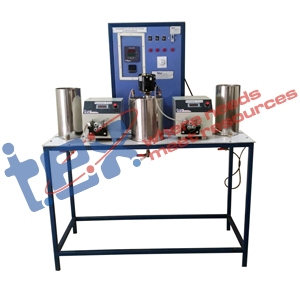

The Experimental Set Up for Online Dissolved Oxygen is an advanced water analysis lab equipment designed to study and measure the concentration of dissolved oxygen (DO) in liquids. It helps learners understand the significance of oxygen content in various chemical, biological, and environmental processes.
This dissolved oxygen analyzer trainer is widely used in Engineering Colleges, ITIs, and Research Centers for experiments related to environmental engineering, water quality monitoring, and process control. It provides hands-on training on real-time measurement, calibration, and monitoring of dissolved oxygen levels using industrial-grade sensors and transmitters.
The online dissolved oxygen experimental setup consists of a DO probe, transmitter, and digital display unit connected through a sampling and circulation system. The trainer allows continuous measurement of oxygen concentration in water or other liquids and displays the results in mg/L (ppm) on a digital interface.
This dissolved oxygen measurement trainer helps students perform experiments such as oxygen saturation studies, calibration of DO sensors, and correlation between temperature and DO concentration. The apparatus can also be used to demonstrate aeration efficiency, biological activity, and process control in wastewater treatment systems.
The setup is designed for ease of use, accurate results, and long-term durability. The system is mounted on an MS powder-coated frame with a transparent reservoir and flow control arrangements, ensuring safe and convenient laboratory operation.
| Specification | Details |
|---|---|
| Power Supply | 230V AC, 50Hz |
| Measurement Range | 0 to 20 mg/L (ppm) |
| Sensor Type | Polarographic or optical DO probe |
| Display Unit | Digital indicator or LCD display |
| Temperature Compensation | Automatic (ATC) through temperature sensor |
| Sampling System | Closed-loop water circulation with flow control |
| Data Output | Optional digital or analog output for monitoring |
| Construction | MS powder-coated frame with safety fittings |
| Safety Features | Overload and overvoltage protection |
Our Online Dissolved Oxygen Experimental Setup is engineered to meet modern academic and industrial training standards. It provides accurate, real-time analysis and ensures a thorough understanding of oxygen transfer and monitoring principles.
With a focus on durability, accuracy, and user safety, this trainer is ideal for Engineering Colleges, ITIs, and Research Institutions aiming to enhance their environmental and process control laboratories. It bridges the gap between classroom learning and real-world water analysis systems, preparing students for industrial applications and research work.